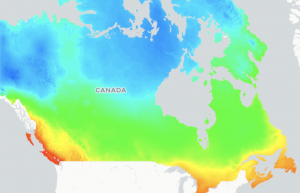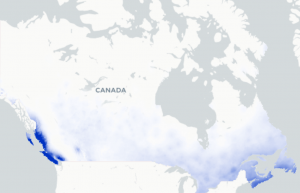Learning Zone
Further information on using climate data or selecting a relevant historical dataset can be found in the Learning Zone.
Analyze
For indices not included in the pre-calculated variable list, the Analyze page can be used to create custom indices, such as Heat Wave.
Data by Health Region
View climate data for a number of health related variables analysed at the level of health regions.
Health Sector Methods
During the initial development phase for ClimateData.ca, Ouranos coordinated efforts to consult users of the health sector. This included the preparation of a bilingual survey to identify the most important health impacts, and related climate indices, to be considered on the website and how climate information should be presented to be of most use to stakeholders in this sector.







